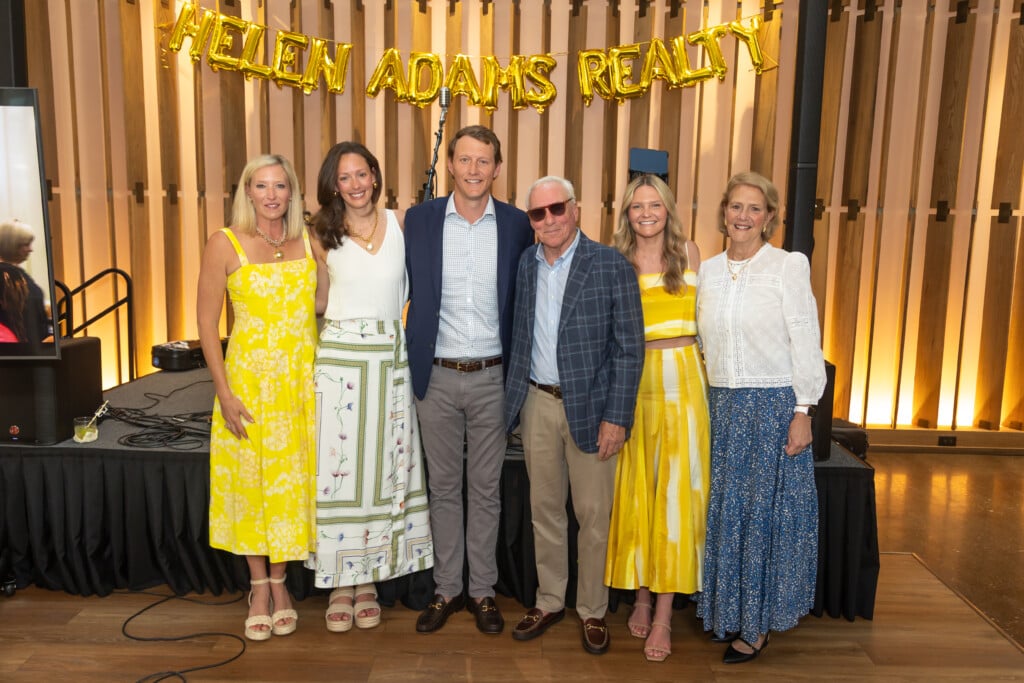Are Townhomes The New Dream Home in Charlotte?
Available land dries up. Housing prices soar. New city regulations encourage density. People hate yard work. All propel a dominant trend in Charlotte real estate.

Last year, fresh off a divorce, Emily Allen thought she could continue to live in the house she and her ex-husband had bought in 2019. It was a lot of space for a single woman and a dog: 2,000 square feet, four bedrooms, two and a half bathrooms, and a massive, sloped yard with a huge willow oak out front and another in back.
“I had intended to stay in the house, but it just became more than I wanted to manage—you know, the yard, and it’s an older house built in the late ’60s, and it needed some stuff, and I just didn’t want to deal with it,” says Allen, a 52-year-old paralegal. “Over the previous three or four years, my insurance and taxes had gone up. So what was quite affordable was becoming less so. I just decided to get out while the getting was good.”
She wanted to stay in the Stonehaven neighborhood in southeast Charlotte, where she has friends. She looked for apartments. Then, one Saturday, she drove past a townhome complex off Thermal Road that was advertising an open house. Allen was familiar with the place, which had been there since the mid-’70s. She’d just never thought about living in a townhome, much less buying one.

Emily Allen was recently divorced and thought she couldn’t afford to buy a home. But the three-bedroom southeast Charlotte townhome she bought in August, she says, “turned out to be a better deal than renting.” Photo by Herman Nicholson
But she ended up joining a growing number of Charlotteans who favor less expensive, lower-maintenance townhomes over traditional single-family detached houses with yards. In a city running out of land and encouraging denser residential development, builders and brokers hustle to meet the demand.
“I went to the open house, and I was charmed,” she says. “It sold that weekend, and I hadn’t even listed my house yet. So I was like, ‘If something else pops up there, I’m going to consider it.’ And it did, and the timing was perfect.” She bought the three-bedroom townhome in August for $271,500. Her old house—a mile and a half away, which she and her ex had bought for $374,500—sold for $603,000. How long did it take her to find a buyer? “A day.”
Both transactions reflect the realities of real estate in Charlotte, where any home will rent or sell for far more than it would have a few years ago. But the rising cost of homes overall, especially since COVID, is one of the main factors that make townhomes more attractive for residents—and developers.
Red Cedar Homes, a home builder founded in 2015, spent its first five years concentrating on single-family houses in neighborhoods near the city center, like NoDa, Villa Heights, and Plaza Midwood. “It really wasn’t the townhome projects that you’re seeing now,” says CEO Jon Grabowski. “I think we were just seeing a transformation out of the great financial crisis and pent-up demand for more in-town living. Of course, that was when, in a neighborhood like Sedgefield, you could build and sell a single-family home for 600 grand. Today, those homes are $2 million.”
Since 2020, the company has built more and smaller homes farther from uptown. Red Cedar built about 50 homes per year before the pandemic; since COVID, it’s built about 300 per year, and Grabowski says the company plans 700 in 2026. Red Cedar still builds in close-in neighborhoods, but it increasingly targets high-traffic areas near exits on Interstate 485. At one point before 2020, 80% of the homes Red Cedar built were single-family detached houses. Now, he says, more than half are townhomes. When we speak in early January, the company has just bought land near I-485 and Harrisburg Road to build a complex of 159 of them. The company also plans a 150-townhome community at I-485 and Brookshire Boulevard.

Red Cedar Homes, founded in 2015, has built more and more townhomes since 2020 like 325 East (shown here) in Dilworth.
The movement continues to grow. In 2023, for the first time, the number of Mecklenburg County building permits for townhomes exceeded those for single-family homes, The Charlotte Ledger reported last year. Since 2020, the number of townhome permits has nearly doubled, while the number of single-family permits has dropped by a third, according to a Ledger analysis.
The inventory of single-family homes in the Charlotte metro area remains high. Data from the regional Realtor association, Canopy, shows that it grew by 20% from December 2023 to December 2024. But the townhome inventory rose by 50% in the same period, which signals builders’ recognition of surging demand. Townhomes on 1,503 lots in 15 complexes—a record for the Charlotte area—were listed for sale in the fourth quarter of 2024, according to the Charlotte office of Zonda, a company that specializes in new home construction data.
“Post-COVID, we started to see more of a shift,” Grabowski says. “As people were working more out of their homes, they needed a little bit more space but didn’t necessarily need the size or privacy of a (single-family home). But it was really during COVID when we saw this shift to, ‘Boy, wouldn’t it be nice, for a similar price as my 800-square-foot apartment, if I could have 1,500 feet of townhome with a bedroom for an office, a bedroom for myself, room for my pets, and I can park my car easily?’ That’s really what it comes down to.”
Unlike Emily Allen, who at first wasn’t even looking for a townhome, Kimberly Bordner knew that was exactly what she wanted. The two don’t know each other or live in the same part of town, but they faced similar circumstances before they chose townhomes: Both were about 50. Both were recently divorced and lived in houses too big for them. Both were looking to start afresh.
Bordner’s old house, in Ballantyne West, was a 4,900-square-foot, five-bedroom, three-bath mansion that she and her ex-husband sold in 2020 for $923,500; it’s now valued at $1.5 million. “When I left the big house, I wanted less space. I wanted more simplicity,” she says. “I liked the fact that, coming out of a marriage, being a single mom, I wouldn’t have to worry about the lawn care and basic maintenance that a townhome community and the HOA provides. I don’t have a green thumb.”
Bordner says she was the first resident of Endhaven Terraces, a Hopper Communities development of 20 four-story townhomes off nearby. She bought it for $476,500 in 2021 and says it fits her post-divorce life better than the old place would have: 2,700 square feet, three bedrooms—each with its own attached bathroom—and a rooftop terrace. It’s an excellent setup for her two college-age children when they come home. While it’s not as spacious or private, the pros outweigh the cons.
“I’ve gotten rid of a ton of things that I really didn’t realize I never needed. Why was I holding on to them? So it’s kind of refreshing,” she says. “Do I feel the need to live in a huge home again? No, I really don’t. I’m not opposed to it, but I am very comfortable and content with my living situation right now.”
Depending on the living situation, townhomes represent an option for renters as well as buyers. Many new townhomes in the Charlotte area are build-to-rent, says Tim McCollum, the principal at Revolve Residential, a firm that focuses on infill development.
While older homeowners use townhomes as opportunities to scale back, younger renters can see them as a chance to break out of their confined apartments. Of course, the rent isn’t cheap.
“There’s not a shortage of 700-square-foot apartments, but if you actually want to have some space and don’t want to step out and buy something, then it works for you,” McCollum says. “They tend to be a lot more attractive for roommates as well, especially in the city. If you have three stories, you can put a roommate upstairs, a roommate downstairs, and you have some separation and privacy—and then you share some living space in the middle.”
The complications of space, inside or outside the home, shape the townhome trend. Land isn’t as plentiful or cheap as it used to be. As more people move to Charlotte, they take up more of it, and builders have less to build on. “The idea on townhomes is that if you buy a piece of land, let’s say 5 acres, you could probably get 15 to 20 houses on it,” says Bart Hopper, Hopper Communities’ CEO. “But you could probably get 70 or 80 townhomes.”
The value for developers dovetails with Charlotte’s Unified Development Ordinance, or UDO, which took effect in 2023. The UDO encourages higher-density development to reduce overall housing costs and make homes accessible to more people. Townhomes, with their smaller footprints, match those goals. The average 2024 home sale price in the 16-county Charlotte region was $493,487, according to year-end Canopy data; the bulk of townhomes sold for between $200,000 and $400,000.
Grabowski of Red Cedar Homes says continued growth will likely lead to a reimagining of the traditional subdivision. Instead of street after street of near-identical single-family homes, developers can plan communities with a mix of townhomes and duplexes for rent or sale, plus detached houses with yards for sale. He says communities of about 400 total homes—divided among those three categories with shared green space, common areas, and accessibility to transit—could incorporate the best of all three housing types as they balance investment and potential profit for developers.
“I don’t think any of us wants Charlotte to be the next Atlanta. But to continue to absorb the growth that we’re receiving, there’s going to be a push for affordability,” Grabowski says. “We were seeing a lot of demand, coming out of COVID, for folks wanting $300,000 and $400,000 housing instead of $500,000 and $600,000 housing. So we’re trying to play our part in that.”







